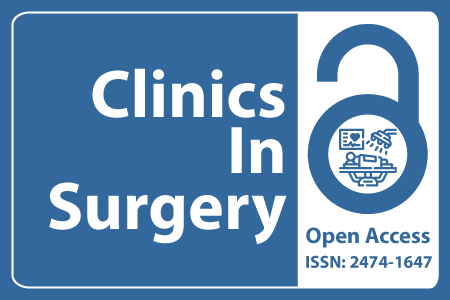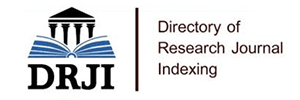
Journal Basic Info
- Impact Factor: 1.995**
- H-Index: 8
- ISSN: 2474-1647
- DOI: 10.25107/2474-1647
Major Scope
- Emergency Surgery
- Neurological Surgery
- Oral and Maxillofacial Surgery
- Obstetrics Surgery
- Otolaryngology - Head and Neck Surgery
- Robotic Surgery
- Bariatric Surgery
- Cardiovascular Surgery
Abstract
Citation: Clin Surg. 2020;5(1):2743.Research Article | Open Access
Accuracy of Clinical Diagnosis of Anal Sphincter Defect: Clinical Evaluation vs. 3 Dimensional Transperineal Ultrasound
Federica Capanna1,2*, Christian Haslinger1 and Josef Wisser1
1Division of Obstetrics, University Hospital of Zürich, Switzerland
2Division of Obstetrics and Gynecology, University Hospital of Geneva, Switzerland
*Correspondance to: Federica Capanna
PDF Full Text DOI: 10.25107/2474-1647.2743
Abstract
Background: Obstetric Anal Sphincter Injuries (OASIS) are common and an important factor in the etiology of anal incontinence. Objective: The objective of this study was to evaluate, classify and compare the agreement of clinically diagnosed third-degree sphincter tears with 3D-Transperineal Ultrasound (3D-TPUS) realized within 3 to 7 days post-delivery. Design: This is a retrospective observational study. Settings: The study examined 8779 women who delivery by vaginal way 119 (1.35%) of those had a primary repair of third-degree perineal tear. Patients: 119 patients with third-degree obstetric anal sphincter tears were diagnosed and treated, 85 of those underwent a 3D-TPUS examination 3 to 7 days postpartum. Main outcome measures: We compared the proportion of third-degree perineal tears, classified with the clinical examination as Grade 3a+b and Grade 3c, with the 3D-TPUS. Results: In 16 patients with clinically diagnosed third-degree perineal tears Grade a and b, the ultrasound examination confirmed the lesion of the External Anal Sphincter (EAS) muscle, but in 9 patients (56% of the cases) we found a lesion of the Internal Anal Sphincter (IAS) muscle, missed by clinical examination. In the remaining 69 patients with the third-degree perineal tears Grade c, the ultrasound examination confirmed both lesions (EAS and IAS muscles) in 56 women, but in 13 patients (19% of the cases) defects of the IAS muscle could not be confirmed by the ultrasound. Limitations: Our study design did not allow detecting occult anal sphincter lesions because we did not examine an unselected group of women after vaginal delivery. Conclusion: There was moderate agreement regarding diagnosis of perineal tears Grade 3a+b and Grade 3c between ultrasound and clinical examination, so a combined use of clinical and ultrasound knowledge can improve the possibility to find a gold standard in the diagnosis of OASIS.
Keywords
Perineum; Ultrasound; Urogynecology; Incontinence
Cite the article
Capanna F, Haslinger C, Wisser J. Accuracy of Clinical Diagnosis of Anal Sphincter Defect: Clinical Evaluation vs. 3 Dimensional Transperineal Ultrasound. Clin Surg. 2020; 5: 2743..













